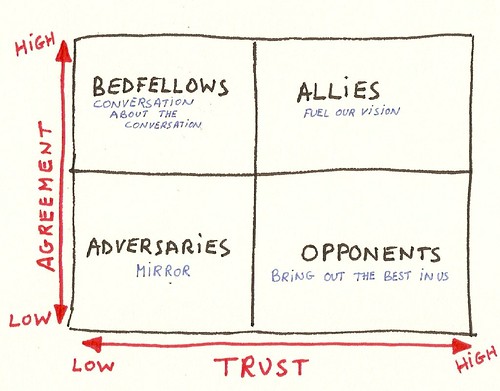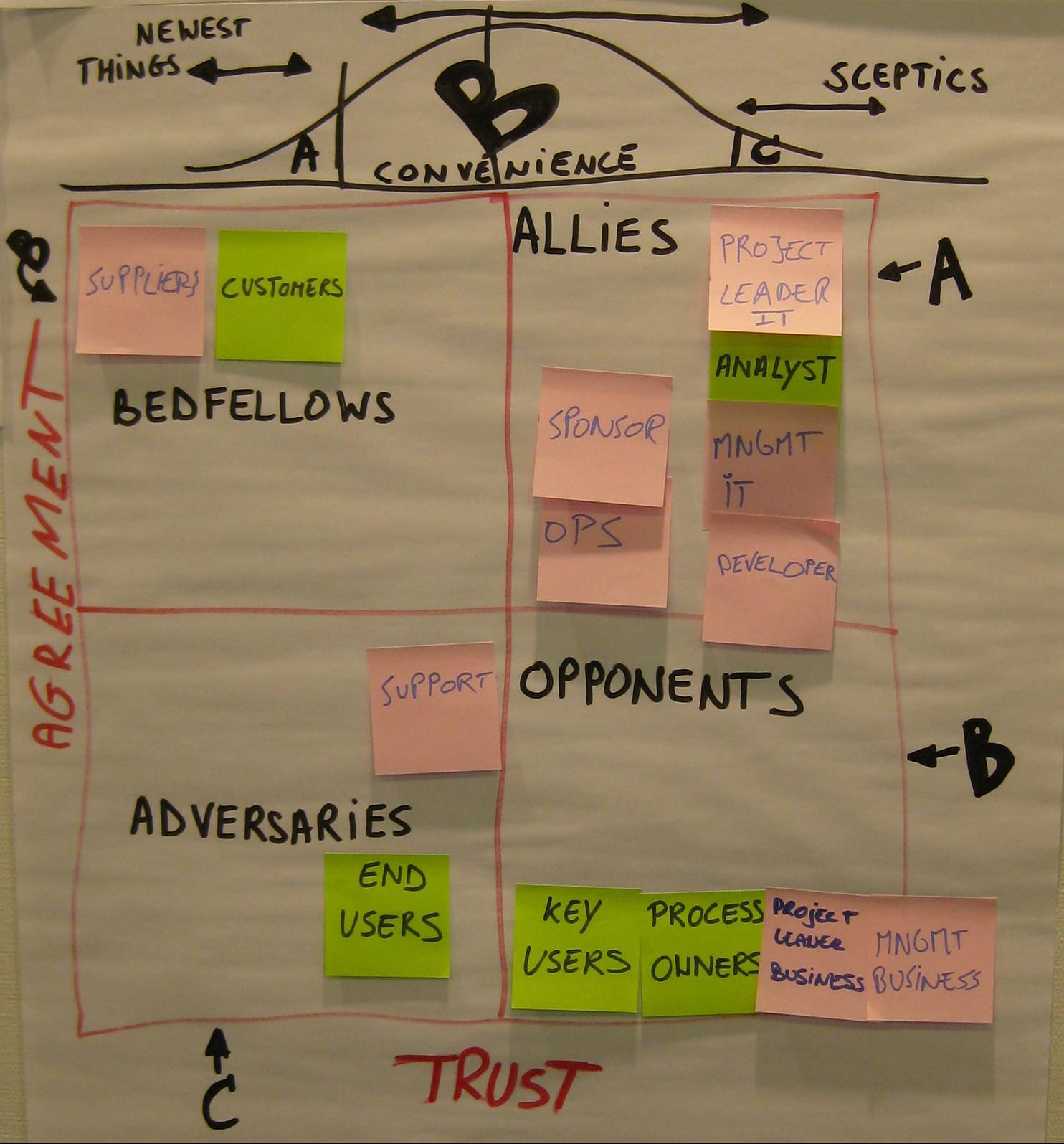Never mistake a lack of agreement for a lack of trust. If you fail to make the right assessment you may end up categorizing people in the wrong pigeon holes and you may be starting off your program on the wrong foot.
There is a matrix I often use to categorize stakeholders in terms of their resistance. It is an adapted version from the 1987 model of Peter Block from his book The Empowered Manager: positive political skills at work.
The major insight here is that conflict has two dimensions:
- Trust: Can we rely on the stakeholder’s support or are they avoiding ownership of the program?
- Agreement: Are we in agreement about the content of the program?
The point of the diagram below is that we need to get the most important stakeholders on the right-hand side into a relationship of trust. Second – and most important – disagreement is actually an accelerator, provided that it happens in a relationship of trust. Never mistake a lack of agreement with a lack of trust!

The above matrix tells us that we need a healthy mix of:
- Allies who fuel our vision, and
- Opponents who bring out the best in us.
For those stakeholders that are situated low in trust, there are two types you are likely to encounter:
- Bedfellows (or better even: ‘one night stands’): these are the most difficult to get a hold on because they seemingly agree on the surface of face-to-face discussions and meetings. However, as we follow-up on their commitments and actions we discover discrepancies. The advice here is to start an individual conversation about what is going on their level of commitment (a conversation about the conversation) in order to bring to the surface whatever is blocking them. It takes courage to start these conversations.
- Adversaries: Just like bedfellows, they are low in trust, but at least they are straight about it. It is likely that you will run into people of this type, openly declaring that they are against this program. If you do, you should approach them in the same way as bedfellows: a conversation about their commitment.
If this all seems a bit too theoretical for you, let’s have a look at a real life example. The mapping below is one that we did for the stakeholders of a major ERP implementation for a multinational in the construction equipment industry.

Here is what we learned:
- First, we mapped the different stakeholders according to the dimensions of trust and agreement.
- Next we figured out that the conflicts we have with keys users, process owners and business representatives in the project are actually “productive conflicts”. At the same time we discovered that the agreement with suppliers and customers was more of a phony type.
- Finally, when it came to mapping the support department and end users, we soon discovered that the conflicts were not of the productive type. As a consequence, between now and go-live we will need a plan to gradually involve both stakeholders and to give them a stake / some ownership of the delivery.
As you can see from the picture we also mapped three areas (A,B and C) of the population analysis (see last week’s article) on the matrix as well.
Conclusion: think twice before you categorize, because the essence of stakeholder readiness is trust, not agreement.


